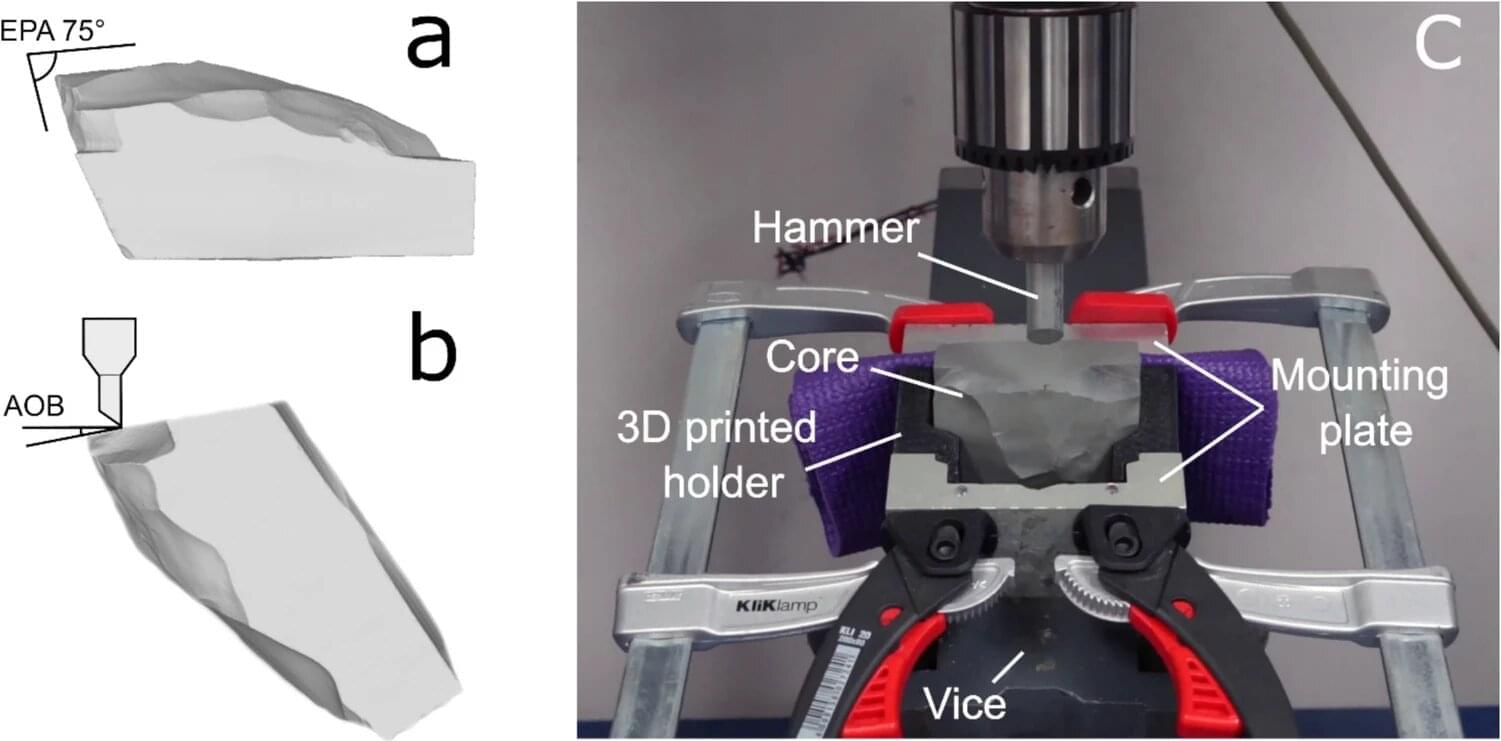University of Wollongong researchers have experimentally confirmed that changes in hammer strike angle significantly affect the fracture path and form of stone flakes produced by Neanderthals during the Middle Paleolithic.
Published in Archaeological and Anthropological Sciences, the findings contradict a widely cited fracture model that credited rock core geometry and stiffness with flaking patterns and predicted that hammer strike angle would have minimal effect on flake formation. Results suggest a greater degree of cognitive control by early human tool makers than previously recognized.
Middle Paleolithic stone tool technology is defined by deliberate core preparation to produce flakes of predetermined size and shape. First appearing in the archaeological record between 200,000 and 400,000 years ago, the Levallois method is a hallmark of Neanderthal tool making in this period.
